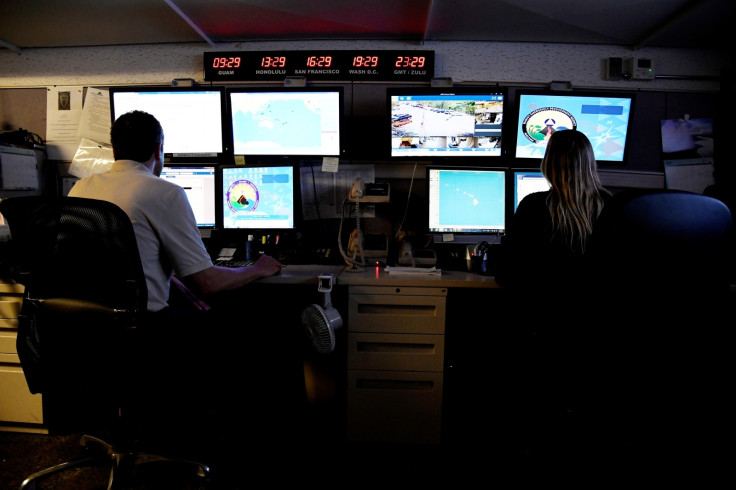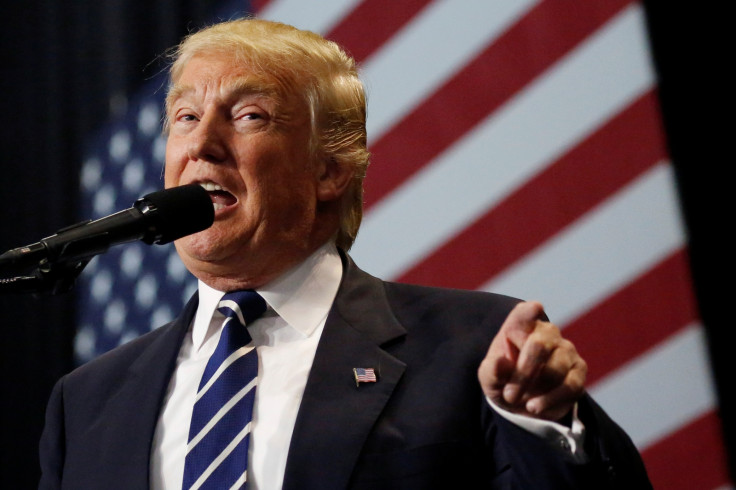If we're about to be annihilated by a massive nuclear missile, who should tell us?
Hawaii missile warning alert was a total disaster - so what happens next?
Nearly 40 terrifying minutes passed between the time Hawaiian officials activated a bogus alert about an incoming missile and the moment the notice was cancelled.
The state was slow to contain the situation over the weekend, waiting 23 minutes to call officials at the Federal Emergency Management Agency (Fema) to get approval to send a retraction, approval that was not even necessary, said Fema. That call lasted for about one minute, a state emergency official said on Wednesday (17 January), but residents and visitors still did not receive the corrected alert until about 14 minutes later.
The confusion — and panic — have raised questions about whether any state should be solely responsible for notifying the public of such an event — especially as Washington and North Korea's frequently traded insults and threats have added to public nervousness.
Hawaii is the only state in the US with a pre-programmed alert that can be quickly sent to wireless devices to warn of a ballistic missile heading towards the country.
US Representatives Colleen Hanabusa and Tulsi Gabbard, both of Hawaii, have asked the House Armed Services Committee to hold a hearing on the issue.
They said in a letter to the committee on Tuesday that although it was understandable for states to have primary jurisdiction over warnings for floods, hurricanes and other natural disasters, a nuclear threat took responsibility to a whole new level.
"When it comes to matters of national security, including whether a ballistic missile has been launched against the United States, one must question whether any state emergency management agency is best suited for that role," the letter says.
The debate comes as North Korea claims it is testing weapons that could deliver a nuclear-tipped ballistic missile to Hawaii, the US Pacific territory of Guam and even the US mainland.
The two networks that were activated in Hawaii were the Wireless Emergency Alert and the Emergency Alert System , both of which use a federal system to send messages to people in certain geographical areas.
The systems can be used by state and federal agencies for extreme weather events, natural disasters, law enforcement notifications and alerts issued by the president. Signal carriers allow people to block alerts from state and law enforcement agencies but not those issued by the president.
"The decision to send a national alert directly to the public rests with the president," Fema spokeswoman Jenny Burke told the Associated Press.

Fema has the ability to send alerts to targeted audiences but has not taken on that responsibility, said Daniel Gonzales, a senior scientist at Rand Corp who was contracted by Homeland Security to study the Wireless Emergency Alert.
Gonzales said that under the current system, it made sense for states to handle alerts because they would be more familiar with local needs. But he acknowledged that since no state except Hawaii had a prepared message, it could take other states as long as 30 minutes to create, enter and distribute one.
In addition, there is uncertainty about how long it takes for an alert to make its way to all phones since the nationwide system for mobile devices has never been tested, Gonzales said.
He said the process could add another five minutes, further cutting into the time that people have to prepare for a disaster. Sending a national alert could cause more problems than a targeted alert, he said.
"You want to be careful about not causing panic everywhere," he said.
In case of a real launch, UA Pacific Command would notify Hawaii state officials, who would then activate their warning systems for residents and visitors.

It is estimated that a ballistic missile would take about 20 minutes to reach Hawaii from North Korea.
State officials said it would take about five minutes for the military to analyse the launch trajectory, leaving only 12 to 15 minutes of warning time for residents.
There has never been a national emergency warning sent to mobile devices, radio or television, Fema said. The agency has conducted three tests of the national public warning system for radios and televisions only.
President Donald Trump dismissed the false alert on Saturday (13 January) as "a state thing."
"I love that they took responsibility. They took total responsibility," Trump said.
"But we're going to get involved. Their attitude and their — what they want to do, I think it's terrific. They took responsibility. They made a mistake."
Trump acknowledged people's fears. "Part of it is that people are on edge, but maybe, eventually, we'll solve the problem so they won't have to be so on edge," he said.
Hawaii's Senator Brian Schatz met members of Hawaii's congressional delegation and officials from several federal agencies to discuss the issue. He said it was important that people had faith in the warning system. The state had a long way to go to rebuild trust, he added.




















